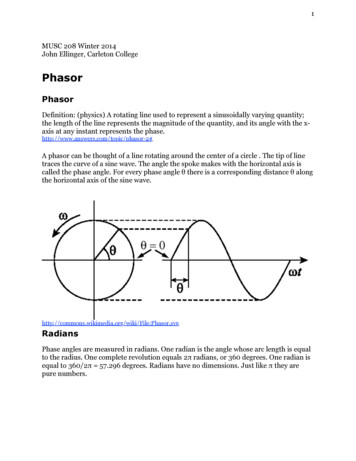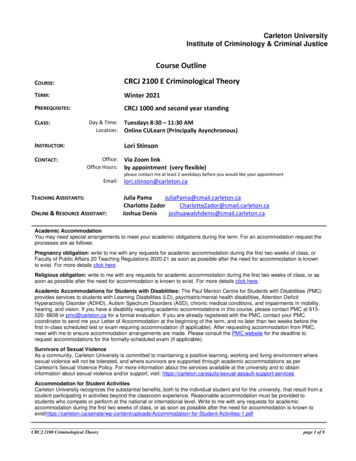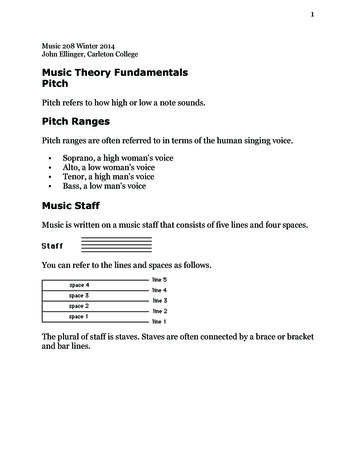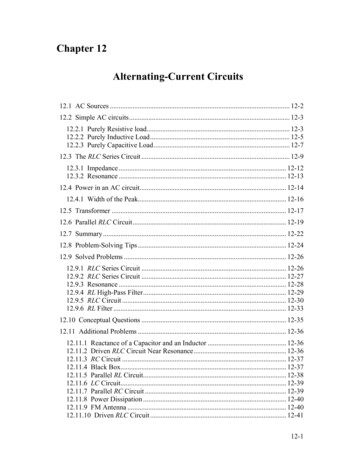
Transcription
1MUSC 208 Winter 2014John Ellinger, Carleton CollegePhasorPhasorDefinition: (physics) A rotating line used to represent a sinusoidally varying quantity;the length of the line represents the magnitude of the quantity, and its angle with the xaxis at any instant represents the phase.http://www.answers.com/topic/phasor-2#A phasor can be thought of a line rotating around the center of a circle . The tip of linetraces the curve of a sine wave. The angle the spoke makes with the horizontal axis iscalled the phase angle. For every phase angle θ there is a corresponding distance θ alongthe horizontal axis of the sine .svgRadiansPhase angles are measured in radians. One radian is the angle whose arc length is equalto the radius. One complete revolution equals 2π radians, or 360 degrees. One radian isequal to 360/2π 57.296 degrees. Radians have no dimensions. Just like π they arepure numbers.
2Phase Angle And Phase IncrementThis unit circle is divided into 32 slices. Each slice has a phase angle theta, θ 2π/32radians. As you move counterclockwise around the circle starting at point (1,0) theheight of the point on the circumference above the horizontal axis corresponds to eachsample of the of the sine wave. The angle θ is called the phase increment and eachsample position is an integer multiple of θ.The sine wave shown below has 32 samples uniformly spaced 2π/32 radians apart. Theactual time interval between samples depends on the sample rate.
3Mentally extend these to pictures to a circle and sine wave with 44100 samples and youhave one second of a 1 Hz sine wave. The sample rate of 44100 samples per second canalso be thought of as 2π/44100 0.0014248 radians per second.
4Phase Increment Of 2 ΘThe original 32 points are shown in red. The phase angle or phase increment is θ. Thegreen lines are spaced using a phase increment of 2θ. The green lines intersect everyother sample point.Using a phase increment of 2θ, the green samples will be selected for the output.
5Phase Increment Of 1/2 ΘThe original 32 points are shown in red. The phase angle or phase increment is 1/2 θ.The green lines are spaced using a phase increment of 0.5θ. The green lines bisect andintersect every sample point.Using a phase increment of 0.5θ, there will be twice as many samples in the output. Thegreen dots represent samples whose values need to be estimated.
6Phase Increment Of 1.68 ΘThe original 32 points are shown in red. The phase increment in green is 1.68θ.Using a phase increment of 1.68, virtually all sample values will have to be estimated asindicated by the green dots.
Radians Phase angles are measured in radians. One radian is the angle whose arc length is equal to the radius. One complete revolution equals 2π radians, or 360 degrees. One radian is equal to 360/2π 57.296 degrees. Radians have no dimensions. Just like π they are pure numbers.










